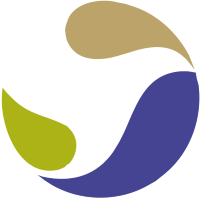
Sanofi SA
PAR:SAN
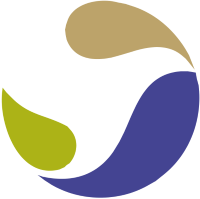
Sanofi SA
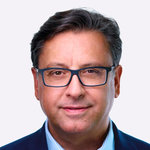
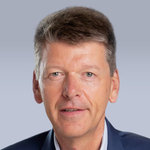
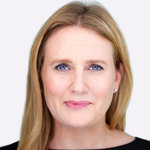
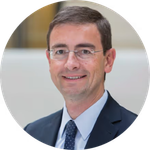

Sanofi SA, a titan in the global healthcare sector, operates at the intricate crossroads of pharmaceutical innovation and patient care, driven by an unyielding commitment to improving human health. Emerging from its French roots, Sanofi has strategically positioned itself as a global leader in pharmaceuticals, vaccines, and consumer healthcare. The company’s success is essentially anchored in its capacity to consistently develop and commercialize life-saving drugs that address a myriad of health concerns, ranging from diabetes and cardiovascular diseases to rare disorders and oncology. Underlining its robust revenue engine is Sanofi's extensive R&D infrastructure that fuels its pipeline with groundbreaking therapies, reflecting a dynamic blend of scientific acumen and market-focused agility. By leveraging a hybrid model that integrates cutting-edge research with strategic alliances and acquisitions, Sanofi ensures a sustained presence in the highly competitive biopharmaceutical landscape.
Enabling this network of innovation and impact is Sanofi's diverse portfolio, a balanced mix of specialty and established prescription drugs, over-the-counter products, and the critical arm of vaccines led by its Sanofi Pasteur division. This diversification offers both growth opportunities and stability, cushioning against the volatile tides of patent expirations and regulatory changes. Its vaccines segment, in particular, is a cornerstone in Sanofi's business, capturing substantial market share with products critical to global immunization efforts, further amplified by its role in responding to health emergencies like the COVID-19 pandemic. With a geographically expansive sales footprint and strategic marketing strategies, Sanofi capitalizes on emerging market opportunities while maintaining a strong presence in established regions, effectively making its bottom line a testimony to its operational excellence and strategic foresight in harmonizing science with humanity.
Earnings Calls
The Wilhelmsen Group reported robust performance driven by its subsidiary Wallenius Wilhelmsen, yielding an $171 million dividend for the quarter and a total of $282 million for the year. This resulted in an 18% return for shareholders. The company announced financial health with a 72% equity ratio and ongoing contract renegotiations enhancing business strength. Earnings before interest, taxes, depreciation, and amortization (EBITDA) experienced an 11% year-over-year rise, reaching $16 million. Management forecasts a first dividend of NOK 12 per share with a potential total of NOK 20, underscoring continued commitment to shareholder value amidst strategic growth initiatives.
Management

Paul Hudson is a renowned business executive known for his leadership roles in the pharmaceutical industry. Born on October 14, 1967, in the United Kingdom, he embarked on his career in the industry with a background in economics. As of 2019, Paul Hudson is the CEO of Sanofi, a global biopharmaceutical company headquartered in Paris, France. Before joining Sanofi, he served as the CEO of Novartis Pharmaceuticals, a division of Novartis AG, where he was instrumental in driving strategic growth and enhancing innovation. His tenure at Novartis was marked by significant advancements in the company's product portfolio and a focus on data-driven therapies. Hudson holds critical responsibilities at Sanofi, where he leads the organization in its mission to transform scientific innovation into healthcare solutions. His focus lies in accelerating the development of specialty care treatments, particularly in fields such as oncology, immunology, and rare diseases. Under his leadership, Sanofi intensifies its efforts towards renewable medicine, with a firm commitment to advancing cutting-edge research and technology. An advocate for digital transformation within the pharmaceutical industry, Hudson emphasizes the importance of integrating data and digital technology to streamline operations and advance patient care. His vision includes fostering a culture of patient-centric innovation and collaboration across the organization. Throughout his career, Paul Hudson has been recognized for his forward-thinking approach and dedication to reshaping how healthcare is delivered. He holds a degree from Manchester Metropolitan University and has completed executive education programs at prestigious institutions like Harvard University. In summary, Paul Hudson's leadership in the pharmaceutical sector is characterized by his strategic vision, commitment to innovation, and focus on enhancing patient outcomes through advanced therapies and digital integration.

François-Xavier Roger does not appear to be associated with Sanofi SA. However, he is known for his role as the Chief Financial Officer (CFO) at Nestlé. François-Xavier Roger has had a distinguished career in finance and international business. Before joining Nestlé, he held several significant positions, including CFO of Takeda Pharmaceutical Company Limited in Japan and Millicom, a telecommunications and media company. He began his career in finance and accounting roles and has extensive experience working in various industries and regions, showcasing his ability to manage financial operations on a global scale. Roger is recognized for his strategic financial leadership and expertise in mergers and acquisitions, capital markets, and investor relations. He holds an MBA from Ohio State University and is a graduate of EM Lyon Business School in France. His contributions have been integral in shaping financial strategies and supporting the growth and development of the organizations he has been part of. If you are looking for information about someone else, please provide more details or clarify if they hold a different position.


Laurent Gilhodes is a noteworthy executive at Sanofi, a global healthcare leader. As of his latest known role, he has been part of the key management team, playing a significant part in advancing Sanofi's strategic initiatives. His expertise and leadership are instrumental in driving the company's goals forward. Sanofi, headquartered in Paris, is renowned for its contributions to pharmaceuticals, vaccines, and consumer healthcare. Mr. Gilhodes’ role involves leveraging his extensive industry knowledge and experience to enhance Sanofi's market presence and innovate within the healthcare sector. His contributions have been vital in maintaining and expanding the company's impact on global health.

Dr. Josephine Fubara is a distinguished pharmaceutical executive known for her work at Sanofi SA, where she serves as the Chief Scientific Officer (CSO) for North America. In this role, she is responsible for overseeing the company’s research and development strategies and ensuring scientific excellence across various therapeutic areas. Dr. Fubara has an extensive background in the pharmaceutical industry, with over two decades of experience. She holds a doctorate in Pharmaceutics, bringing a wealth of knowledge in drug development and formulations. Her career has been marked by a focus on innovation, collaboration, and the development of strategic partnerships to drive scientific advancements and bring new therapies to market. She is well-regarded for her leadership abilities and commitment to fostering an inclusive and dynamic research environment. Under her guidance, Sanofi continues to make significant advancements in healthcare, particularly in fields like immunology, oncology, and rare diseases. Dr. Fubara's work is instrumental in shaping the company's scientific direction and maintaining its position as a leader in the global pharmaceutical industry.

As of the latest available information, Thomas Kudsk Larsen is an executive at Sanofi, a global biopharmaceutical company. He has served as the Chief Communication and Corporate Affairs Officer. In this role, he oversees internal and external communications, as well as stakeholder engagement and public affairs strategies. His responsibilities include managing Sanofi's reputation globally and supporting the company's business objectives through effective communication strategies. Thomas Kudsk Larsen brings extensive experience in communication and corporate affairs, contributing to Sanofi's efforts to enhance its corporate profile and engage with key stakeholders worldwide.

Roy Papatheodorou is a notable figure in the pharmaceutical industry, currently serving as the Executive Vice President, General Counsel, and Head of Legal, Ethics & Business Integrity at Sanofi SA, a prominent global healthcare company. Prior to joining Sanofi, he held the position of Group General Counsel at Novartis, another leading pharmaceutical company, where he played an instrumental role in managing the legal affairs of the organization. With extensive experience in the legal field, Roy has been recognized for his leadership and expertise in managing complex legal and compliance challenges in the healthcare and pharmaceutical sectors. His career has been marked by a dedication to ethics and integrity, reflecting his commitment to upholding high standards within the industry.
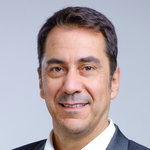
José Catllá is a well-regarded executive at Sanofi SA, a leading global healthcare company. He holds a significant role, typically associated with corporate affairs or communications, where he is responsible for steering the company's public relations and communication strategies. His role involves engaging with stakeholders, managing the company's public image, and often addressing regulatory or public policy issues. With a strong background in communication and corporate strategy, Catllá has contributed to shaping Sanofi's interactions in the global market. His experience and expertise are integral to navigating the complex landscape of the pharmaceutical industry while ensuring transparency and strengthening Sanofi's reputation worldwide.
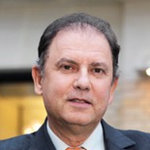
Pierre Chancel is a well-regarded figure in the pharmaceutical industry, known for his experience and leadership at Sanofi SA, a global healthcare company headquartered in France. During his tenure at Sanofi, Chancel held several significant roles, contributing extensively to the company's growth and innovation in pharmaceuticals. Chancel's career at Sanofi spanned numerous important positions, where he implemented strategic initiatives that strengthened the firm's global market presence. He was notably involved in overseeing various therapeutic areas and played a crucial role in the global expansion of Sanofi's products. His leadership style was characterized by a strong focus on research and development, fostering a culture of innovation, and adapting to the rapidly changing pharmaceutical landscape. His time at Sanofi was marked by efforts to streamline operations and enhance the effectiveness of product lines, thereby increasing Sanofi's competitive edge. Chancel's expertise in navigating complex regulatory environments and his ability to build relationships with stakeholders were key components of his success at the company. Overall, Pierre Chancel's contributions to Sanofi have left a lasting impact on the company's strategies and its ability to deliver healthcare solutions worldwide.




















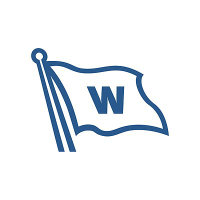






























 You don't have any saved screeners yet
You don't have any saved screeners yet

Good morning. Welcome to the fourth quarter results for Wilh. Wilhelmsen Holding. My name is Thomas Wilhelmsen.
This is Christian Berg.
I thought before we dive into the numbers, Christian, will share a little bit or talk a little bit about what has happened in the last, say, a couple of weeks or a couple of months. A lot has happened since the last quarter, especially when it comes to say, the volatility and uncertainty related to world trade. The Wilhelmsen Group, we are, as everyone following us very much reliant on global trade. And of course, more in certain pockets of the company than others. But still, we are very much reliant on it. And the geopolitical scene and the, let's call it, the macroeconomic and world trade seen in terms of tariffs, et cetera, has changed or at least gotten certain elements to it, which has brought some excitement into us and our group.
Yes, definitely, last quarter has shown a lot of volatility. And I guess, discussions on this volatility will continue in this year as well.
Yes, I think so. And I think when we look into our portfolio of companies, there are certain areas where we are, say, watching this more carefully than others because when we look at the Maritime Services segment of the Wilhelmsen Group, of course, all trade is important, but we might not be as affected on the Maritime Services side as we, for example, would be in strategic holding and investment and specifically towards Wallenius Wilhelmsen.
And that's basically also what we have seen historically that the Maritime Service Group is kind of stable through different volatile periods of the year and different periods through the year, while specifically also Wallenius Wilhelmsen then has sort of more and Wilh has seen more into -- more effect of the different challenges coming in from the side.
And from a security perspective, of course, there's also been a lot that has happened in the last year and especially in terms of the Red Sea, which is, say, taking significant capacity out from various shipping segments. And in many ways, of course, we -- from a humanitarian perspective, we hope that this will say, calm down and there will be not just a cease fire, but that's the various wars and disruptions will end. But the counter to that, of course, is that a lot of capacity is coming back into the market. So there will be an interesting period ahead.
And as you have seen, the Red Sea is starting to opening. So we see still trades falling a bit more than it did a quarter back. So it will impact the global trade and specifically also the shipping trades. We don't know exactly where and how, but some impact it will have. But all in all, I think the Wilhelmsen Group is well positioned. We want to continue to grow. But of course, we are very focused with all this uncertainty when it comes to the discipline that we have as a group. And for you later going deeper into the numbers, of course, this is very, very important for us.
And just to add on top of that, having a solid balance sheet and liquidity to handle whatever might happen is a very important measure for us to have in place when if or what something happens that we need to take care of.
Okay. We'll go a little bit further into the details for the quarter. We believe it's been a pretty strong quarter for the group. The EBITDA has increased 12% year-over-year. When it comes to Maritime Services and New Energy, the underlying, say, business sentiment is quite strong. Of course, we've had very strong contribution from Wallenius Wilhelmsen and from Hyundai Glovis, which is seriously impacting the numbers for the Wilhelmsen Group in positive terms.
We have, unfortunately, I would say, nearly always in the fourth quarter, certain one-offs. We try not to have fourth quarters with significant one-offs and that we do this prudently throughout the year, but still, we had a few. But that's the way it is, and this is ending up with a net profit of $91 million for the fourth quarter. We increased the ownership in Treasure from 78.7% to a little bit more than 84%. So that's been, say, according to plan. And yesterday, we had our Board meeting, and the Board proposes a dividend of NOK 12 plus potential up to another NOK 8. And this is within the dividend policy that we have as a group, so -- and up from last year.
So looking into Maritime Services for the quarter, the numbers are somewhat, say, distorted, especially as a result of the Zeaborn acquisition. Christian will come back to that a little bit later. It's a little bit technical. It's not seriously technical, but at least it's distorting the numbers somewhat from the quarter. But underlying, the business is still performing. I believe we have a good position in the markets in which we operate, and we are working, say, strategically and steadily towards continued growth in this segment.
So -- but we did also here have some, say, impairment losses or adjustments during the quarter. There has been with all the uncertainty that has been going on in the world in the last couple of years, this is actually part of the results of this impairment as we have say, exited certain areas or countries where we've had operation. And unfortunately, that's, let's say, with that comes a few adjustments. But all in all, I would say WMS is performing quite well, and we believe this will continue into the coming year.
New Energy, a strong quarter, strong quarter driven largely by high activity within the NorSea Group. So -- and with all the basis we have, of course, there's changes from quarter-to-quarter and year-to-year in what parts of Norway where we have strong activity. But all in all, the portfolio is delivering as we wanted to with an 11% increase year-over-year and with an EBITDA of $16 million, which is significantly up from last year in terms of being 27% and an EBITDA margin adjusted of 22%.
Certain smaller adjustments there as well. I will not go into it because you're coming into the numbers later. But we have a $5 million gain, which is predominantly related to a small business [indiscernible] and also the transactions in Reach during the quarter.
Then Strategic Holding and Investments, as I said at the outset, the performance of the Wilhelmsen Group is very much at least in the latter quarters driven by high profitability within this segment. Wallenius Wilhelmsen had their quarterly presentation yesterday, a very strong result. And the market is continuing to be strong. But of course, with the uncertainties that we are talking about, and it's very difficult to know what impact potential tariffs or other trade wars can have on this part of our portfolio.
But underlyingly, the business is doing well. There's been a tremendous job done in terms of contract renegotiations during not just last quarter, but also throughout the year of 2024. So the book of business within Wallenius Wilhelmsen is as strong as it's ever been. So that's very, very pleasing for us to see. There's been some minor adjustments in terms of the financial management we have of the financial portfolio. But all in all, I would say we are pretty pleased with that.
And when it comes to cash flow, again, as a result of Wallenius Wilhelmsen's performance, there's been strong dividend contribution towards shareholders. We received $171 million during the quarter and for the year, $282 million from Wallenius Wilhelmsen. So this is very positive for the Wilhelmsen Group, ensuring that we not only have a strong balance sheet, but also a strong liquidity position. We're able to continue with our dividend policy. We continue to strengthen our balance sheet, and we're also able to actually continue to grow and strengthen the overall portfolio of the company.
Just briefly on ESG, there's been, as I said in previous quarters, a lot of work done internally in order to both streamline and report on various ESG axis and it's extremely unfortunate. We've had 2 fatalities during last year, which is too many. And we feel with the families and the close ones to the diseased. So that's just work that we need to continue to have high focus on. We're working in several parts of our operation in, I would call it, high-risk areas and focus on health and safety is just paramount. On the other axis of the ESG element, the Wilhelmsen Group has developed according to the plans and targets that we have set. So I'm pretty pleased with the way that's moving ahead.
So then for the highlights of the year from a shareholder perspective, there's been an 18% return for shareholders. That's a combination of the increase in share price and dividends. We are pleased with that. We've had increase in total income and EBITDA for the group, which is also very pleasing. And as mentioned many times, the results from Wallenius Wilhelmsen is positively impacting our position as well and it's been record results. We've increased our shareholding in Edda Winds and in Treasure ASA during the year. And we are continuing to grow, of course, the general portfolio, but also within Ship Management.
And with that, I thought I would also say a few words about Ship Management, because in '25, we will actually celebrate the Ship Management 50th anniversary. And there is a bit of a long-standing history for Ship Management because this actually started back in close to the 1930s with the cooperation between the Wilhelmsen Group and Barber Steamships Company in the U.S. And this led on to a company being set up in Hong Kong, which eventually then became the platform for Ship Management for the partnership, but then also towards third-party Ship Management as we see it today. So third-party ship management for the Wilhelmsen Group is definitely not new, and it's an important part of our portfolio and future strategy.
Within Ship Management, we have 4 main axes that we deliver towards our customers, predominantly or the most important is on technical management where we actually look after the assets or the ship on behalf of our customers. But in order to do that, we also need crew. And of course, people is the most important assets that we have in this company. And I'll come back to the numbers later, but the crew management is a vital part of the overall Ship Management offering.
Also looking at OpEx management, how can we, on behalf of the owners, ensure that the procurement processes, et cetera, are as optimal as possible. And there's a lot of ancillary services related to dry docking, ship inspections, et cetera. If we look at this slide, we can see that we've had quite a bit of growth in Ship Management over the last couple of years, and this has been highly intentional. We have, as we have presented previously, done various acquisitions within this segment in the last couple of years. And today, we have 10 manning offices around the world. We run from a technical perspective out of 8 offices, we have the head office in Singapore, and we have close to 15,000 seafarers on our books, which is a sizable amount.
And we run from a management perspective, approximately 450 ships and 320 to 330 are on full technical management. So it's quite a sizable operation, which we are very proud of and which represents a very important competence base within the maritime sector. So for Wilhelmsen Group as a major supplier in general towards the maritime sector, we believe the competence within Ship Management is extremely important for the overall understanding of this industry.
Outlook. We've touched on many of it. We have a strong platform within the group. We believe both the segments and the businesses that we have, have very sound footings, and we are very well placed within the marketplace. But there are, of course, certain uncertainties that we have seen increasing over the last couple of weeks and months. So that will be something to watch. But in general, we have a relatively positive outlook on where we stand and how this should move into the coming periods.
So with that, Christian, I'll leave it to you to go through the numbers in a little bit more detail.
Thank you very much, Thomas. I'll dive into some of the technicalities that Thomas mentioned earlier, starting with the first point actually on the top-line. So top-line for the quarter, a growth even if I'm sort of diving into the first one-off. So the first sort of technical change that we've made is on the top-line from the purchase of Zeaborn. There is -- there are 2 ways of accounting for manning ships. Are you doing it on a gross level or you do it on having a fee for doing the service level.
So on the gross level, you gross up the top-line and you gross the top-line or you do it net with a fee. The Zeaborn company had sort of a combination. And after a sort of thorough run through the last half year, we have seen that they do not match exactly with the way we account for the contracts. So we have made the changes taking down the top-line with sort of $15 million for the 2 quarters that's been in second and third quarter. And on the continuous path, we will continue on the same sort of logic. So they've gone through the sort of fine-tuning of this, as also mentioned in the second quarter when we did the same presentation last year.
So some technicalities. It doesn't really do anything to the cash flow from the business or anything to the business of itself, but it is either net logic or a gross logic when it comes to the numbers. So EBITDA for the quarter, 12% up, as Thomas alluded to earlier. On the EBIT side, we do have a $11 million impairment. And Thomas basically said the words. There are 3 countries which are smaller parts in the big picture of Wilhelmsen. And there is a brand name called NavFleet with approximately $4 million. That's -- there's sort of discontinued selling the brand name. So brand name is taken away being sold under a different name. So no cash flow effects, no effect going forward, but the cleanup of the balance sheet going forward.
Other to mention is probably also that if it's the volatility in the world, but there's also a volatility in the currency market. So weakening of the krona towards the dollar specifically. And as alluded to several times, we do have a rolling currency or currency basket hedge and the mark-to-market of that and mostly unrealized currency losses or then the unrealized losses comes from that rolling hedge. As you can also see on the bottom line under the earnings per share on the comprehensive income that the balance sheet is also affected by this when we have NOK assets being accounted for in U.S. dollars, we will see a negative impact on the asset base, in fact of the weakening of the kroner or the strengthening of the U.S. dollar.
So again, for the quarter, as Thomas said, quite okay and definitely okay from the 2 associates or the larger associates being Wallenius Wilhelmsen and Hyundai Glovis with $116 million for the quarter. For the full year, again, positive on the EBITDA, 8% up from last year. Major contributor being Maritime Services with $109 million, probably at record levels if we compare to at least the last 10 years. Same goes also for New Energy and specifically then NorSea base or NorSea that we are on very high and good levels for both the major activities.
On the Associates side, $472 million coming from Wallenius Wilhelmsen and Hyundai Glovis. $372 million from Wallenius Wilhelmsen, $90 million from Hyundai Glovis. So they are big contributors not only for the quarter, but definitely also for the year. And as I will come back to a couple of seconds, also obviously for the cash flow with the dividends being paid out.
On the other side -- on the other points to mention might be that, again, there are -- for the year -- for the full year, the currency valuation, negative valuation will account for approximately $27 million in the financial income expenses.
Coming to the cash flow and starting off the year with $224 million in cash and remembering the just above $100 million from Maritime Service EBITDA turning into $46 million of cash, cash being then used to grow the business. So increase in working capital through the year has been continuous. So basically, just about half of the EBITDA is being added into the working capital.
On the other side, in the New Energy side, you can see that cash flow is actually increasing from EBITDA, and that's more than it's around $24 million, $25 million in release of working capital in specifically then NorSea. The big sort of cash contributor again coming into the year is Wallenius Wilhelmsen, contributing with $280 million, Glovis with some $20 million, taking out with some smaller other points as well, but then taking the cash flow into $311 million from dividends from JVs and Associates, being spent basically into roughly $40 million in the WMS Group and $50 million into the New Energy Group. And the most sort of known one in the New Energy Group is close to $24 million being invested in the increase in Edda Winds through the year.
And through the year, having paid $121 million in dividend and also adding on to buybacks with that. We have spent cash what we think is wisely and sort of pay back on our debt structure and specifically on the WMS debt structure, which is the most flexible one, so really decreasing the debt into that. And on the other financing activities, it's basically split in 1/3 approximately $30 million being invested in treasury shares, 1/3 being financial costs and 1/3 being actually then leases being repaid. So taking us back to -- from the start $224 million down to $155 million, but with a healthy profile, I think, I hope you agree on the year 2024.
Still -- or not even still, but we are a solid company, 72% equity ratio. And for the ones that can sort of see the -- this is also where you see the approximately $200 million of loss in the balance sheet where being the comprehensive income, taking the valuation of the NOK exposure down with approximately $200 million, but still keeping us at 72% of equity ratio, which is a very sound and healthy level. And when you go to the right-hand graph, we see the debt maturity profile and then basically the 2 major debt packages that we do have -- having a sort of 2027 tenure.
And I thought also used to this moment, hopefully, that someone is listening in from banks and the financial society that obviously, with the sort of momentum in the different markets, specifically now, for instance, the bond market, we are also always interested in discussing with all the relevant potential providers might be that I get a couple of phones now into sort of how to take a dive into other sources of funding possibilities for the future in the structure that we do have. So again, working sort of really prudent on paying down debt and being good at handling the cash at hand.
And as Thomas said, the Board has proposed a first dividend of NOK 12 and a potential dividend of NOK 8. And on the graph, that makes it sort of potentially then NOK 20 in total. That NOK 20 potentially in total will end up at NOK 4.97 in the 3% to 5% target. So at the very high end of the target rate. But the only one that's sort of being proposed to the general assembly now is NOK 12. And the NOK 12 will take us into the territory of the target, just above 3% for the first dividend. So happy to share this with the audience.
If you go to the right-hand graph, it shows that the first dividend will be just above $40 million in total and potentially then in total $76 million. And on the '24, '23 lines, you will also see that the thick blue line is the potential buybacks through the year, which we will continue on a regular basis to evaluate if it's good for the shareholders and the best for the company going forward.
So on that, Thomas, as we try to say a lot of time, we're still continuing and continuing and continuing to shaping the maritime industry.
Yes. We are, and that's being a continuous effort by 25,000 people every single day within the Wilhelmsen Group. So we try to use our vision statement as much as we can. And I dare to say there are a few companies around the world that has a vision which is so highly embedded into a large international organization as we have. There might be some questions. So we'll give some time for the questions to come through. If there's no questions, then there are questions over.
Yes, Age Sturtzel, Investor Relations. There are quite a few questions related to capital and both capital coming in and how we use it and investments. It's from Jorgen Lian, DNB and Investor.
So I split it in 2. I think I'll take the first questions to you, Christian, related to more on the capital allocation part and then Thomas, the others related to what to invest in. And so I think I pass it to you. So it's not getting too many questions in one go.
But the first one is -- or the first 3 is related to it's coming like NOK 100 per share in dividend from Wallenius Wilhelmsen, how to use it. It's a question about will we use a buyback as a tool going forward, and also from Jorgen about what if we have a target for net leverage and the balance sheet. So if you can take those.
I'll try to do sum up of all, and it's good to get a lot of questions in the same, so I'll try to answer in the same way, but we do not have a target specifically, but we do have, let's say, a target of having a healthy balance sheet being able to -- as we started the presentation today, being able to take care of our business or our businesses and to support our businesses. That's the most important.
But our sort of 3 legs is being able to have a solidity, being able to have a cash at hand to support and being able to grow the business. And then, of course, obviously, paying out a dividend according to the policy. And we do have a history of buying back shares, and it's natural for us to utilize that vehicle as a payback vehicle towards all the shareholders that we do have in the group. So that's the logic.
I'm sorry, I can't be too sort of specific on it, but that's the way we are thinking of the capital coming in. But that's sort of a split between the 3 logic. I don't know, Thomas?
I think you answered it well. So if they are happy with the answer then...
What to invest and how to invest in and how to invest...
And then I can take it concrete from Jorgen Lian. One is about the strategic importance of the stake in Glovis. You can maybe take that first, Thomas.
Yes. Hyundai Glovis is a position that we've had now for more than 20 years. It's, say, a platform in Korea for the Wilhelmsen Group, which is, say, providing us a strategic access, which is second to none. Hyundai Glovis is an exciting company with, in our view, priced attractively from a future potential gain perspective and within an area where we feel that we have something to contribute, but also sectors that we say, look upon as both interesting and strategic going forward. So the Hyundai Glovis shareholding is deemed strategic from the Treasury ASA Board, but it's also deemed very strategic from a Wilh. Wilhelmsen Holding perspective.
I might also add to Thomas' eventually on the relation with Glovis. The Glovis is sort of a global company. And we do also have different industrial angles towards both Korea as a nation, but also then specifically towards Hyundai and the Glovis company at arm's length, obviously, what is that sort of Ship Management, different sort of digital initiatives and other initiatives on the New Energy side towards Korea and the Hyundai Group.
All areas of WMS have, say, interfaces in various sorts. Wallenius Wilhelmsen, of course, has significant interfaces towards the Hyundai Group. So all in all, it's -- as I said, it's deemed a very strategic position for the Wilhelmsen Group.
And then one looking more forward also from Jorgen is are there any specific business areas where you see interesting potentials looking for tangible investments or acquisitions?
I wish I could be very specific, but within the 3 segments that we do have, we are continuously looking at how we can, first and foremost, be, say, continuing to support the businesses that we have, how we can continue to be, say, the most efficient operators within the areas that we operate, but also how we could either deepen or widen the segments through various offerings.
So we are looking, I would say, across the 3 segments for opportunities. And I think it's fair to say that we believe that there will be more opportunities in the aftermath of COVID and everything that has happened also from an overall disruption perspective in the last couple of years. So there's been lesser attractive opportunities than what we thought it would be, but we will see in the period ahead what's coming towards us.
I should probably put on my glasses but that, of course, with the cash flow coming in, being extremely disciplined on sort of how to evaluate and how to go forward is one of our key tasks actually in the period to come when we are having this solid -- and the cash at hand. So we need to be extremely good at being efficient and disciplined in our behavior.
I have a bit of an internal saying strategic growth, but disciplined implementation. Yes. Discipline is both in terms of capital, but also in terms of how we run the businesses from an efficiency perspective is high on the agenda.
Then there is a final one from an investor, which I can answer. It's about potential merging of A and B shares. This is for shareholders to consider. It's been addressed at the general meeting before and the Board has responded to it and it's not been supported. So I feel it's outside the quarterly presentations.
So that rounds up the Q&A session. So Thomas and Christian, if you want to wrap up.
Well, thank you very much. Thank you for the questions. It's -- we liked questions. So it's -- we appreciate that. So thank you, and thank you very much to everyone that's listening in. And thank you, Christian, for participating. So looking forward to an exciting 2025 and to see all of you for the next presentation.
Exciting and disciplined.
Exactly.
Thank you.